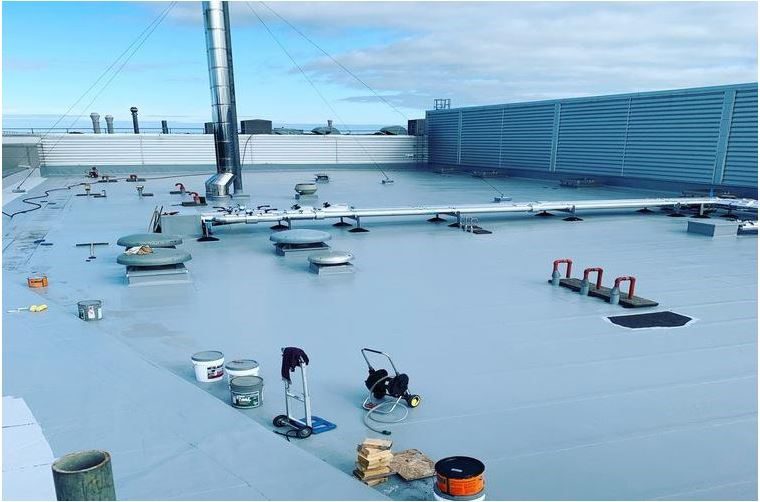There are numerous advantages to having a flat roof. However, there is one distinct disadvantage to flat roofs: water pooling. This is because flat roofs do not drain water as well as pitched roofs. Those pitched roofs have a natural slope that allows water to flow away from the roof.
These roofs are prone to generating what is known as ponding water because they do not drain water well. Ponding water is defined as water that has been sitting in a puddle on a roof for more than 48 hours at a time. Ponding water may not pose an immediate hazard, but if it is allowed to remain over time, it can cause the roofing membrane to deteriorate.
Water pooling means accumulation of standing water like when rainwater stands and does not drains out. Flat Roofs are the oldest form and used in arid climates. There are many advantages of flat roofs. Flat roof repair can be done in very less amount. The durability of flat roofs is about 10 years. After every 10 years, they should be checked and must be repaired.

Flat roofs can be used for storing items that have no other sensible home, for storing other heavy equipment. They are the most affordable roofs. It?s very easy to maintain. They are very useful as some people use flat roofs like a garden. Very lower construction and repair cost.
Have high energy efficiency. These are much cheaper than pitched roofs. It provides extra space for storing items. These are not attractive and stylish but the best.
It reduces the transmission of heat, as It does not allow the heat to pass in the house ie the interior of the house.
Ponding water is not a concern on a well-performing flat roof because it will drain or even evaporate.
The ponding water does not disperse when your flat roof has uneven regions owing to sagging, an insufficient slope, or drainage concerns.
There should be a proper drainage system to avoid this problem. Drainage should be made in the areas where you think the problem could arise. At every step, there must be proper drainage. So, that the water doesn?t stand. Drainage will allow the water to flow easily into the areas with large, easily available drains. You must look for dips. If the flat roof has some small uneven areas, it should be levelled.
Flat roofs should be designed with minimum falls of 1:40 to give it a final fall of about 1:80, which will itself correct all the inaccuracies in the construction.
Low Spots Should Be Fixed
Commercial flat roofs aren’t always fully flat, even though they’re termed that. This is due to slight slopes in the roof’s surface that can occur as a result of the installation procedure, weak points in the roof, or a concentrated area of debris or precipitation.
Increase the number of drain lines in the structure.
If your current drainage system is having trouble adequately removing water from your flat roof, there are a few things you can do to speed things up.
Adding more drains, despite the higher expense, is one of the most effective strategies to address this problem.
Roof Crickets should be installed.
When it comes to water pooling on your flat roof, you may notice that it collects in certain locations. These locations are usually found near chimneys or huge vents.
Installing roof crickets in these areas is the most effective approach to combat water ponding.










